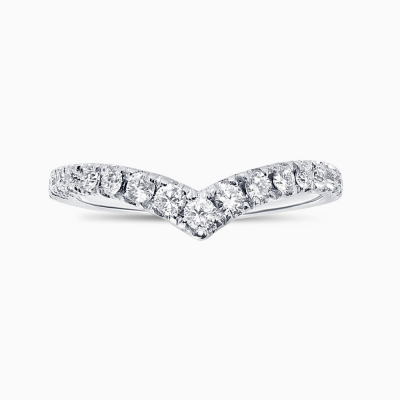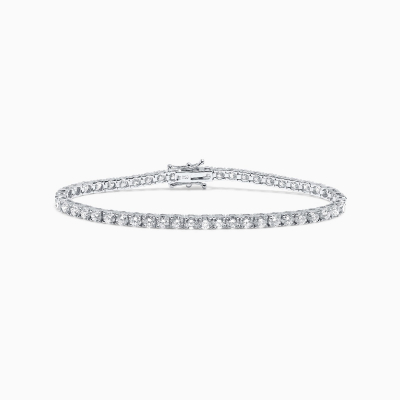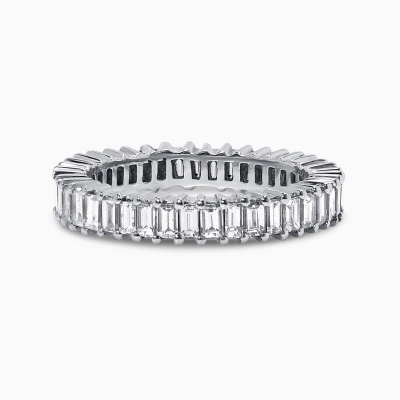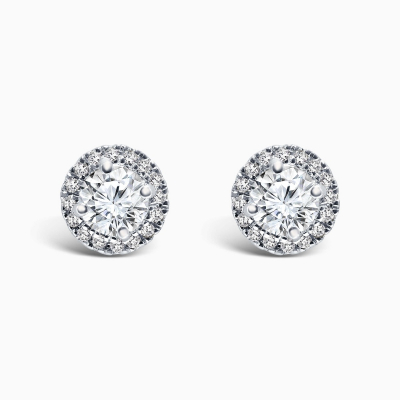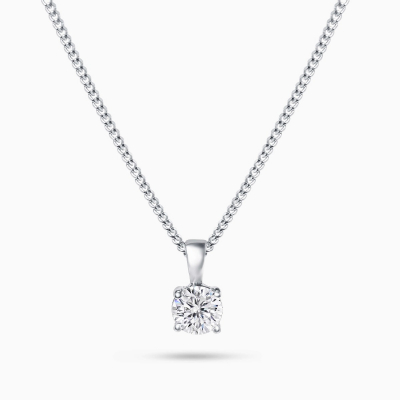GBP
/
GBP
/
Shipping to:
Currency:
EYE-CLEAN DIAMONDS
Eye-clean diamonds are a coveted category of gemstones in the world of jewellery, highly sought after by individuals who desire a sparkling, flawless appearance in their precious gemstone. In essence, when we refer to an "eye-clean" diamond, we are describing a gem that is devoid of any inclusions or blemishes visible to the naked human eye. This term is commonly used in the diamond industry, and it signifies that the diamond is exceptionally clear and free from any imperfections that might diminish its visual appeal. To fully appreciate what makes an eye-clean diamond so special, it is essential to delve into the intricacies of diamond clarity, grading, and the criteria for determining what is visible to the naked eye.
When discussing eye-clean diamonds, it is important to understand that this is not an officially standardized term within the diamond grading system, such as the renowned 4Cs (carat weight, cut, colour, and clarity). Instead, it is a phrase that has evolved to address the practical concerns of diamond buyers who wish to strike a balance between the beauty of their diamond and their budget constraints.
To grasp the concept of eye-clean diamonds fully, it's vital to explore the following key aspects:
Inclusions and Blemishes: Inclusions are natural internal characteristics or flaws that develop within a diamond during its formation deep within the Earth's mantle. Blemishes, on the other hand, are external surface imperfections. Both inclusions and blemishes can affect a diamond's visual clarity. Inclusions can take various forms, including tiny crystals, feathers, or even small cracks. Blemishes might consist of scratches, nicks, or chips on the diamond's surface.
The Naked Eye Criterion: When we say a diamond is eye-clean, we imply that it exhibits no visible inclusions or blemishes when viewed under typical conditions of 20/20 human vision. This evaluation is made at a distance of approximately six to twelve inches, which is the typical distance at which one would examine a piece of jewellery. The idea behind this criterion is to ensure that any imperfections in the diamond are not apparent to the unaided eye, allowing the gem to shine with brilliance and clarity.
Diamond Clarity Grading: The Gemological Institute of America (GIA) and other reputable gemological laboratories assess diamond clarity using a scale that ranges from "Flawless" to "Included" (FL, IF, VVS1, VVS2, VS1, VS2, SI1, SI2, I1, I2, I3). Diamonds graded as FL (Flawless) and IF (Internally Flawless) are exceptionally rare and exhibit no visible inclusions or blemishes even under magnification. As we move down the scale, diamonds graded as VVS (Very, Very Slightly Included) and VS (Very Slightly Included) may have inclusions but are typically considered eye-clean. However, once we reach the SI (Slightly Included) grades, there is an increasing likelihood of visible inclusions without magnification.
Importance of Diamond Clarity in Visual Appeal: Diamond clarity plays a significant role in a diamond's overall visual appeal. Diamonds with higher clarity grades appear more brilliant and emit a greater display of light, making them more desirable. This is why many buyers prioritize diamonds that are eye-clean, as they want a gemstone that sparkles and shimmers without any distracting imperfections.
The Role of Magnification: It is essential to note that a grading report from a reputable gemological laboratory can provide detailed information about a diamond's clarity characteristics, including the size, location, and nature of any inclusions. However, this report alone cannot determine whether a diamond is eye-clean. Even diamonds with SI1 or SI2 grades may vary in terms of their eye-clean status. Some SI diamonds may be perfectly eye-clean, while others may have inclusions that are visible without magnification.
VS1 and Above: Typically, diamonds graded as VS1 (Very Slightly Included 1) and above are considered safe bets for being eye-clean. This means that diamonds with these grades are highly likely to be free from visible inclusions when examined with the naked eye. Buyers who prioritize an eye-clean appearance often opt for diamonds in this clarity range to ensure a beautiful and pristine gem.
Balancing Budget and Beauty: One of the primary reasons people seek eye-clean diamonds is to strike a balance between the visual appeal of the gem and their budget. While FL and IF diamonds are extraordinarily clear, they come at a premium price due to their rarity. By selecting diamonds in the VS1 and VS2 clarity range or even SI1, buyers can often achieve a beautiful, eye-clean appearance while managing their costs effectively.
Consultation with Experts: For those who are seeking the perfect eye-clean diamond, enlisting the expertise of a reputable jeweller or gemologist is crucial. These professionals can assist in identifying diamonds that meet your criteria and preferences.
Diamond Shape and Eye-Clean Status: It's important to note that the shape of a diamond can also impact its perceived clarity. Some diamond shapes, such as round brilliants, have a natural ability to hide inclusions more effectively due to their facet arrangement and the way they interact with light. Other shapes, like emerald cuts or Asscher cuts, may make inclusions more visible. Therefore, the choice of diamond shape can influence the criteria for what is considered eye-clean.
At Rêve Diamonds, we will help to ensure you find the perfect diamond for your requirements. If you want an eye-clean diamond, talk to us and we will show you the options we have available for the diamond shape you have in mind so you can find you the most cost effective option.







